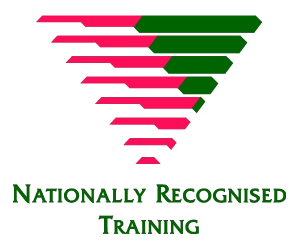Defensive 2WD Course (2WD1)

Course Units
RIIVEH201E Operate a light vehicle
TLIC1051 Operate commercial vehicle
TLIC0031 Apply low risk car driving behaviours
Who is this training right for?
Those seeking to improve their proactive driver awareness. Passenger and commercial vehicle operators who are unlikely to venture off sealed roads and drive 2WD vehicles.
One-day Course (2WD1)
Duration: 7.5 hrs
AIM
To improve the skills and knowledge required to safely operate a light or commercial vehicle and apply low risk driving behaviours.
Understanding the risk factors that contribute to collisions or incidents when driving a car and applying operation and car control skills.
For private bookings client specific information can be included in the presentation.
Students will receive a digital Statement of Attainment upon successful completion.
Entry Requirements
Students must be 17 years of age or over and hold a valid AU/NZ Drivers Licence (Class C) or equivalent.
Licences must be presented to the assessor prior to the commencement of the course.
If you are still on a provisional licence, you must bring your own P plates to be displayed on the vehicle during your individual practical on-road assessment.
Please advise when booking if you hold an extraordinary licence as other conditions may apply.
Students will be required to provide their Unique Student Identifier (USI) number prior to the commencement of the course.
Students are required to wear comfortable and appropriate attire for outdoor activities, including flat enclosed shoes.
Learning Outcome
- Apply relevant legislation applicable to low risk car driving
- Plan and prepare for operations
- Operate light vehicle
- Operate commercial vehicle
- Apply low risk driving behaviours in a car
- Apply low risk car driving strategies
- Explain risk factors that contribute to collisions or incidents when driving a car
- Apply operation and car control skills
- Monitor traffic and road conditions
- Monitor and maintain vehicle performance
- Carry out operator maintenance
Content
- Key legislation required to operate a light or commercial vehicle
- Relevant laws and penalties for demerit point offences, such as driving while unlicensed, disqualified or under the influence of drugs or alcohol
- Relevant road rules and traffic safety legislation
- Organising work activities to comply with site standards
- Adapting to differences in vehicles, including their operations, controls and safety devices to maximise safety and efficiency
- Identifying, selecting and loading equipment and/or ancillary attachments
- Reporting environmental issues
- Carrying out a pre-start, start-up, park-up and shutdown procedures
- Checking and replenishing fluids and carrying out lubrication processes
- Differences between transmission types
- Application of different steering methods when turning or negotiating high-speed bends
- Correctly using the vehicle lights and indicators
- Carrying out inspections and identifying faults
- Processing written records
- Refuelling procedures
- Loading and offloading procedures
- Equipment and trailer types, characteristics, uses and limitations
- Consequences of vehicle collisions or incidents
- Low and high speed braking procedures
- Position on road or lanes requirements for both laned and unlaned roads
- Principles and techniques for identifying driving hazards and related defensive driving techniques
- Apply precautions and required actions to minimise, control and eliminate identified hazards.
- Low-risk driving behaviours
- Causes and effects of fatigue on drivers
- Factors that increase fatigue-related accidents
- Fatigue management techniques
- Principles and techniques for map reading and road navigation
- Monitoring and anticipating traffic hazards and taking appropriate actions
- Reading and interpreting relevant instructions, procedures, information and signs
- Techniques for coordinating and communicating job activities with others


